#ibms software
Explore tagged Tumblr posts
Text

Unraveling the Essentials of Software Development
In today’s digital era, software development stands as the backbone of technological advancement. From powering intricate systems to simplifying everyday tasks, the significance of software in modern life cannot be overstated. Whether you’re an aspiring developer or a business owner venturing into the digital realm, understanding the fundamentals of software development is paramount.
Software development encompasses a myriad of processes, methodologies, and tools aimed at creating functional and user-friendly applications. From conceptualization to deployment, each phase demands meticulous planning, coding prowess, and rigorous testing. Here are some key aspects to delve into:
Planning and Analysis: Every successful software project commences with thorough planning and analysis. This phase involves identifying requirements, understanding user needs, and outlining the project scope.
Design and Architecture: Crafting a robust architecture lays the foundation for a scalable and efficient software solution. Design principles such as modularity, scalability, and maintainability are pivotal in this stage.
Development and Coding: Armed with a solid plan and design, developers embark on coding, breathing life into the software. Proficiency in programming languages, frameworks, and development methodologies is indispensable here.
Testing and Quality Assurance: Rigorous testing ensures that the software meets predefined standards of functionality, performance, and security. Various testing techniques like unit testing, integration testing, and user acceptance testing are employed to identify and rectify defects.
Deployment and Maintenance: Once the software clears the testing phase, it’s ready for deployment. Continuous monitoring, updates, and bug fixes ensure smooth operation and longevity of the software.
In today’s fast-paced digital landscape, Agile methodologies have revolutionized the software development process. Agile emphasizes adaptive planning, iterative development, and close collaboration between cross-functional teams. By embracing Agile principles, organizations can respond swiftly to changing requirements, mitigate risks, and deliver high-quality software in a timely manner.
Software development is a dynamic and multifaceted domain that continues to evolve with technological advancements. By understanding its intricacies and embracing best practices, businesses can leverage software to streamline operations, enhance user experiences, and stay ahead of the competition.
For unrivaled software development solutions tailored to your unique needs, look no further than Blockverse Infotech Solutions. With a team of seasoned developers and a proven track record of delivering cutting-edge software solutions, Blockverse Infotech stands ready to transform your ideas into reality. Whether you’re envisioning a bespoke mobile app, a scalable web platform, or enterprise-grade software, trust Blockverse Infotech to exceed your expectations.
Blockverse Infotech Solutions — Your Partner in Software Development Excellence.
#ibms software#software engineer#adaptive software development#sdlc software#app development software#react native software#ruby on rails software#software agile development#mobile applications development#computer software development
0 notes
Text

USA 1993
423 notes
·
View notes
Text
start them young

373 notes
·
View notes
Text
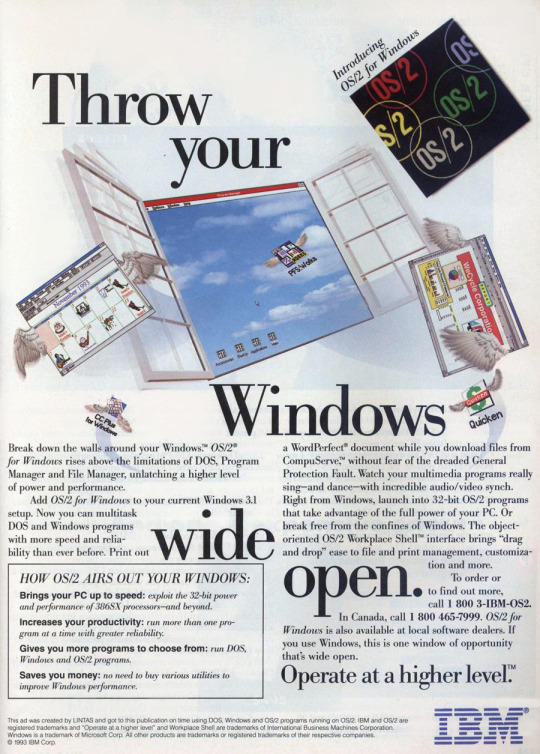
PC/Computing - July 1994 OS/2 for Windows
279 notes
·
View notes
Text

📞💔 To our great regret, following in the footsteps of Russia’s VK Group and its quiet farewell to ICQ, Microsoft has now officially shut down Skype — a true legend of the 2000s internet era. What once defined how we connected, called, and chatted across the globe has been silenced… not by users, but by boardroom decisions.
💻 Skype wasn't just software — it was a cultural milestone. It brought faces to voices, bridged continents in seconds, and made "Skyping" a verb in dozens of languages. Its shutdown is not just sad — it's irreplaceable. Another digital monument lost to corporate fatigue.
📉 This only proves one thing: well-paid marketers and project managers have repeatedly failed to breathe new life into legacy platforms. Instead of adapting tradition to modern times, they let icons wither. And for what? Another feature-bloated app with no soul?
🌐 But we haven’t lost hope. If Winamp can rise from the ashes, why not Skype? Why not AIM? Why not ICQ? Maybe, just maybe, it won’t be Microsoft or VK who lead the resurrection — maybe it’ll be an indie developer or a bold startup that understands nostalgia can be modern.
👀 Paging Yahoo Inc. and AOL… We’re waiting.
#InternetCulture#america online#aol#company#early internet#icq#icq new#instant messaging#instant messenger#messanger#old internet#Skype#microsoft#aim#vk#aol instant messenger#messenger#apps#mobile app development#software development#software#softwaredevelopment#y2k blog#y2k aesthetic#y2k style#yahoo#ibm#vaio#soft aesthetic#old technology
12 notes
·
View notes
Text
The story of Microsoft's meteoric rise and IBM's fall has been on my mind lately. Not really related to any film, but I do think we're overdue for an updated Pirates of Silicon Valley biopic. I really think that the 80's and 90's had some wild stories in computing.
If you ask the average person what operating system your computer could have they'd say that if it's a PC it has Windows, and if it's a Mac it has macOS. All home computers are Macs or PCs, but how did it get this way?
In the 70's everyone was making home computers. Tandy was a leather supply goods company established in 1919, but they made computers. Montgomery Ward was a retail chain that decided to make their own store brand computers. Commodore, Atari, NEC, Philips, Bally and a million other assorted companies were selling computers. They generally couldn't talk to each other (if you had software for your Tandy it wouldn't work on your Commodore) and there was no clear market winner. The big three though were Tandy (yeah the leather company made some great computers in 78), Commodore and Apple.
IBM was the biggest computer company of all, in fact just the biggest company period. In 1980 they had a market cap of 128 billion dollars (adjusted for inflation). None of these other companies came close, but IBM's success was built off of mainframes. 70% of all computers sold worldwide were IBM computers, but 0% of it was from the home market.
IBM wanted to get into this growing and lucrative business, and came up with a unique plan. A cheap computer made with commodity parts (i.e. not cutting edge) that had open architecture. The plan was that you could buy an IBM Personal Computer (TM) and then upgrade it as you please. They even published documentation to make it easy to build add ons.
The hope was that people would be attracted to the low prices, the options for upgrades would work for power users, and a secondary market of add ons would be created. If some 3rd party company creates the best graphics card of all time, well you'd still need to buy an IBM PC to install it on.
IBM was not in the home software business, so they went to Microsoft. Microsoft produced MS-DOS (based on 86-DOS, which they licensed) but did not enforce exclusivity. That meant that Microsoft could sell MS-DOS for any of their competitors too. This was fine because of how fractured the market was. Remember, there were a lot of competitors, no one system dominated and none of the competitors could share software. Porting MS-DOS to every computer would have taken years, and by that point it would be outdated anyways.
IBM saw two paths forward. If the IBM PC did well they would make a ton of money. Third party devs like Microsoft would also make a lot of money, but not as much as IBM. If it failed, well then no one was making money. Either way the balance of power wouldn't change. IBM would still be at the top.
IBM however did not enjoy massive profits. It turns out that having cheap components and an open architecture where you could replace anything would... let you replace anything. A company like Compaq could just buy their own RAM, motherboards, cases, hard drives, etc. and make their own knockoff. It was easy, it was popular, and it was completely legal! Some people could order parts and build their own computer from scratch. If you've ever wondered why you can build your own computer but not your own tv or toaster, this is why. IBM had accidentally created a de facto standard that they had no control over.
In 1981 IBM's PC was worth 2.5% of the marketshare. By 1995 IBM PC compatibles were 95% of the marketshare, selling over 45 million units and IBM had to share the profits with every competitor. Apple is the only survivor of this time because the Macintosh was such an incredible piece of technology, but that's a different story for a different time.
And Microsoft? Well building an OS is much harder than putting together a few hardware components, so everyone just bought MS-DOS. With no exclusivity agreement this was also legal. That huge marketshare was now the basis for Microsoft's dominance.
IBM created a computer standard and gave the blueprints to every competitor and created a monopoly for Microsoft to boot. And that's why every computer you buy either is made by Apple with Apple software, or made by anyone else with Microsoft software. IBM is back where they started, having left the home computer business in 2005.
It's easily the biggest blunder in computer history. Other blunders have killed companies but none were quite as impactful as this one.
This story, and many others I know of, I first read in "In Search of Stupidity", a book authored by a former programmer and product manager that was able to see a lot of this first hand. I make no money advertising this book, I just had a great time reading it.
#software#hardware#microsoft#ibm#apple#tandy#nec#compaq#Wordstar#borland#ashton-tate#lotus#Ms-dos#windows#word#excel#access#commodore#atari#philips#bally#In search of stupidity#macintosh#montgomery ward#pirates of silicon valley
10 notes
·
View notes
Text
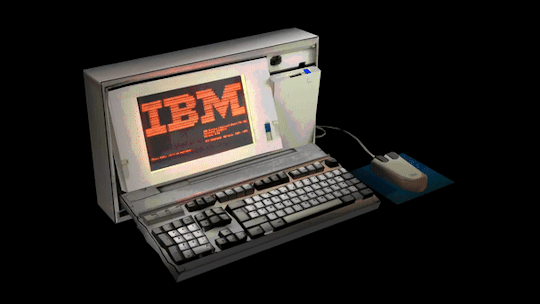

PS1 graphics IBM PS/2 model P70
Made in blender, I'm still learning and this was my first attempt at an "animation" (all i really did was move around the addon grid box and insert keyframes, but even that was confusing to me)
i followed a tutorial for this:
➮ PS! style objects
➮ PSX Vertex wobble addon
➮ Sand Ripper (the texture ripper I used because Shoebox didn't work for my computer)

Here are the textures I made for this, and images used as reference and for them, just because i think theyre interesting :]
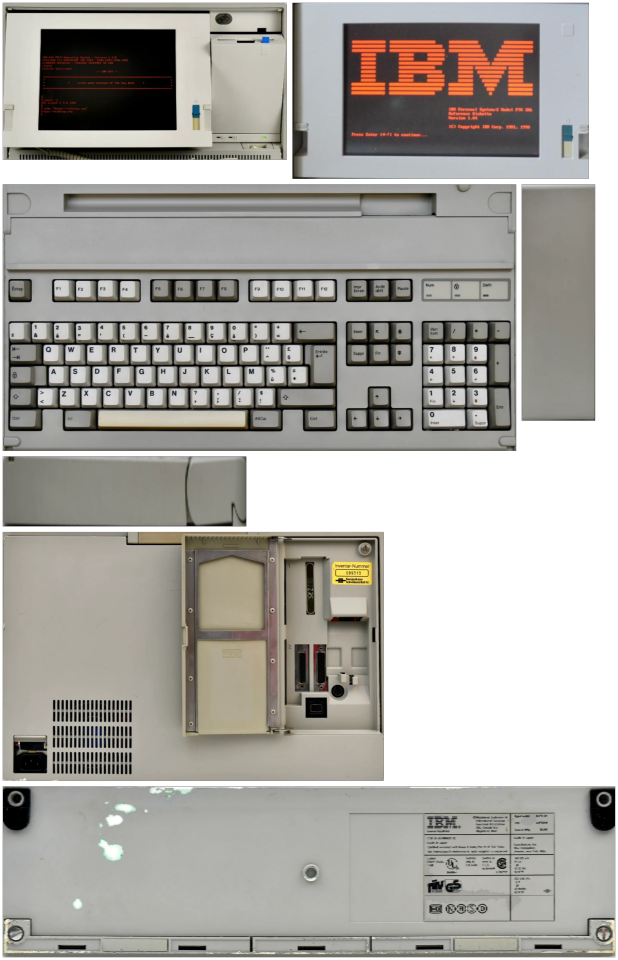

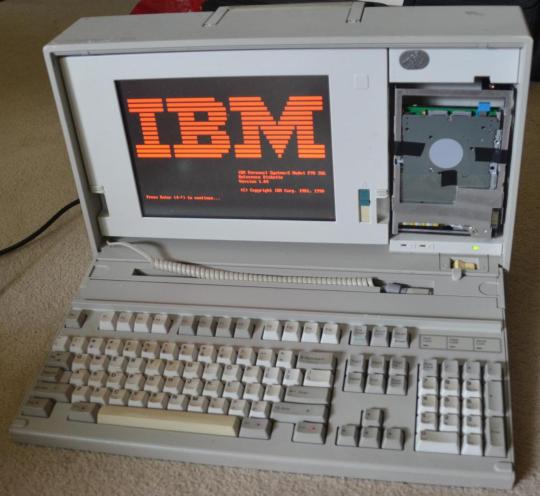


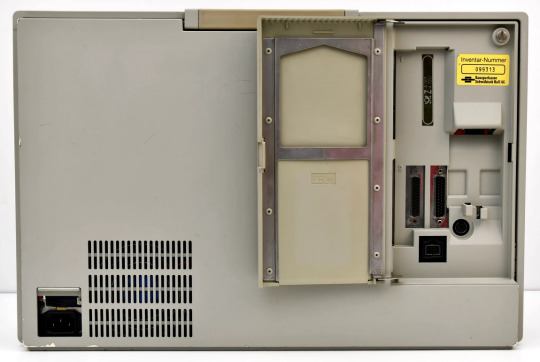


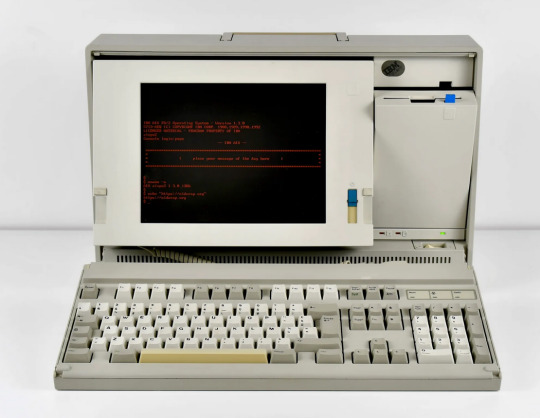
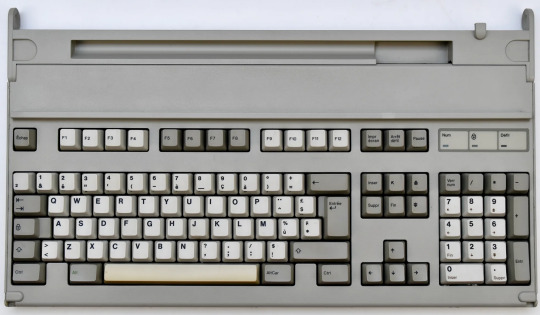
#Blender#learning blender#Blender 4.1#Blender 3d#3d model#3d modelling#3d modelling software#image textures#blender textures#PS1 graphics#ps1 aesthetic#moving images#gif#IBM#IBM pc#objectum#objectophilia#technophilia#90s tech#techcore#vintage#vintage video games#donut posting
14 notes
·
View notes
Text
if the ibm 704 is hatsune miku’s grandpa, then I think it follows logically that the commodore sam is ibm 704’s son/miku’s dad
21 notes
·
View notes
Text

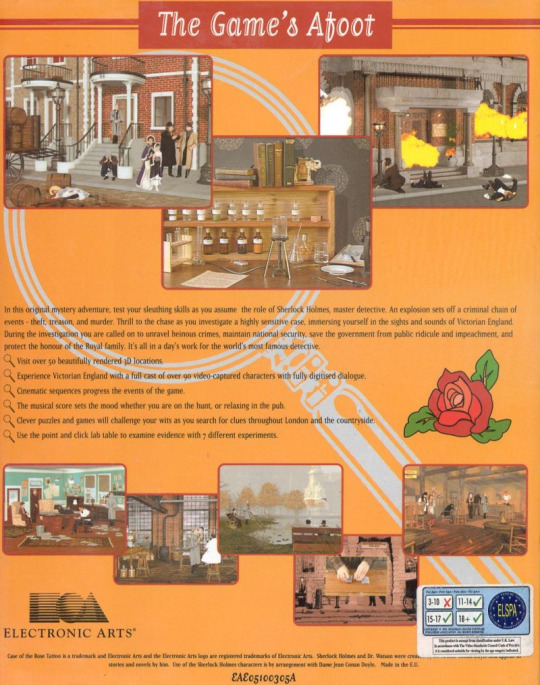




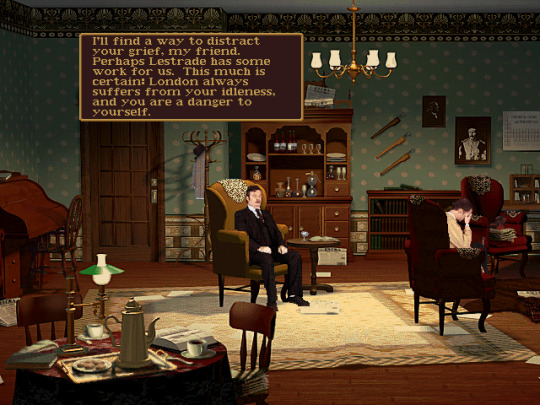



"The Lost Files of Sherlock Holmes: The Case of the Rose Tattoo" video game for the IBM PC, sequel to "The Case of the Serrated Scalpel" (Mythos Software, Electronic Arts 1996)
#sherlock holmes#video game#the lost files of sherlock holmes#the lost files of sherlock holmes: the case of the rose tattoo#ibm pc#1996#90s video game#video game screenshots#electronic arts#ea#mythos software
6 notes
·
View notes
Text
In the late 80s, Lotus was trying very hard to figure out what to do next with their flagship spreadsheet and graphics product, Lotus 1-2-3. There were two obvious ideas: first, they could add more features. Word processing, say. This product was called Symphony. Another idea which seemed obvious was to make a 3-D spreadsheet. That became 1-2-3 version 3.0.
Both ideas ran head-first into a serious problem: the old DOS 640K memory limitation. IBM was starting to ship a few computers with 80286 chips, which could address more memory, but Lotus didn’t think there was a big enough market for software that needed a $10,000 computer to run. So they squeezed and squeezed. They spent 18 months cramming 1-2-3 for DOS into 640K, and eventually, after a lot of wasted time, had to give up the 3D feature to get it to fit. In the case of Symphony, they just chopped features left and right.
Neither strategy was right. By the time 123 3.0 was shipping, everybody had 80386s with 2M or 4M of RAM. And Symphony had an inadequate spreadsheet, an inadequate word processor, and some other inadequate bits.
via Joel on Software
Experience taught the software industry that it is usually more lucrative to skip optimization and rely on Moore's Law instead. Also less lucrative meant a sunk product line in the case of IBM Lotus 1-2-3 (the previous market leader). "When you play the game of thrones, you win or you die. There is no middle ground."
we should globally ban the introduction of more powerful computer hardware for 10-20 years, not as an AI safety thing (though we could frame it as that), but to force programmers to optimize their shit better
232K notes
·
View notes
Text

ABQ Retro RETURNS
Join us Saturday, July 26th for another fantastic public meetup! With vintage computers from the 70's, 80's, 90's, and beyond, there's throwback fun for everyone.
Get hands-on with retro games and get a better understanding of how far we've come. We'll see you there!
11AM - 4PM
Quelab Makerspace (1511 Central Ave NE, Albuquerque)
http://www.abqretrocomputers.com
1 note
·
View note
Text
Interview: Gosling on Java
I found this interview fascinating. I flatter myself by imagining I have a lot in common with Gosling. Kudos to Darryl K Taft and The New Stack!
#software development#java#programming languages#object oriented programming#canadian#computer science#computer history#1990s#ibm#career#oracle#google#uav#ai#jvm#programming#crab
1 note
·
View note
Text

USA 1993
#USA1993#MERIT SOFTWARE#STRATEGY#SPORTS#FOOTBALL#IBM#AMIGA#TOM LANDRY STRATEGY FOOTBALL DELUXE EDITION
261 notes
·
View notes
Video
Converting to IBM System/360, 1964 by Colorcubic™ Via Flickr: colorcubic.com/2010/06/04/ibm-system360/
#Photography#Scientific applications#Digital computer#mainframe#COBOL#FORTRAN#promotional materials#Business applications#Software#System/360#International Business Machines Corporation#IBM#flickr
0 notes
Text
How to Use AI to Predict and Prevent Cyberattacks
In today’s rapidly evolving digital landscape, cyberattacks are becoming more frequent, sophisticated, and devastating. As businesses and individuals increasingly rely on technology, the need to bolster cybersecurity has never been more critical. One of the most promising solutions to combat this growing threat is Artificial Intelligence (AI). AI can enhance cybersecurity by predicting,…
#AI cybersecurity solutions#AI for cybersecurity#AI in fraud detection#AI threat detection#Check Point Software#Cisco#CrowdStrike#Darktrace#FireEye#Fortinet#IBM Security#machine learning in cybersecurity#malware detection with AI#McAfee#Microsoft Defender#Palo Alto Networks#predict cyberattacks with AI#prevent cyberattacks with AI#Qualys#SentinelOne#Sophos#Trend Micro#Zscaler.
0 notes
Text

Modern organizations may improve client interactions, increase revenue, and streamline operations with the help of Microsoft Dynamics 365 CRM. Its integrated platform handles customer support, marketing, and sales interactions with ease. Microsoft Dynamics 365 CRM uses automation, analytics, and artificial intelligence (AI) to increase corporate agility, optimize processes, and boost customer interaction. This Flexible Solution encourages team cohesiveness throughout your company and supports data-driven decision-making for sustained success, spend money on Dynamics 365 CRM.
#customer relationship management#erp software#fusion5#corporate performance management#cpm tools#ibm cloud#crm systems#netsuite#enterprise architecture#erp system in new zealand#microsoft dynamics 365 crm
0 notes
